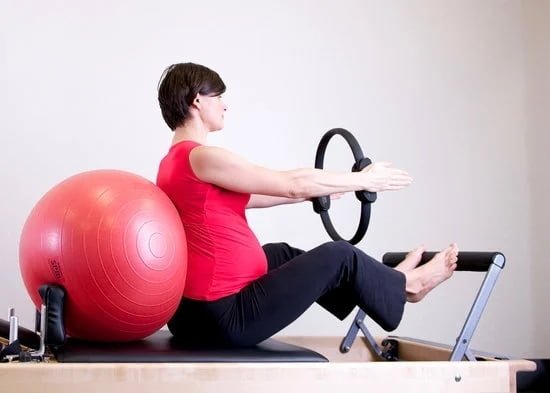When it comes to snorkeling, having the right equipment is essential for an enjoyable and safe experience. One of the questions that often arise is whether training fitness fins can be used for snorkeling. In this article, we will delve into the versatility of training fitness fins and explore whether they are suitable for snorkeling activities.
Snorkeling fins and training fitness fins may appear similar at first glance, but there are key differences between the two. Understanding these differences is crucial in determining whether training fitness fins can be effectively used for snorkeling. In the following sections, we will dive deeper into these disparities and shed light on what makes each type unique.
Before making a decision to use training fitness fins for snorkeling, there are important considerations to keep in mind. Factors such as buoyancy control, swimming technique, and comfort play a significant role in evaluating the suitability of training fitness fins for snorkeling activities. By understanding these considerations, individuals can make informed decisions about whether or not to utilize their training fitness fins during their next snorkeling adventure.
Join us as we embark on a journey to uncover the hidden advantages and potential limitations of using training fitness fins for snorkeling. From safety concerns to tips on optimizing your use of these fins, we will provide you with valuable insights to help you make an educated choice. Additionally, we will explore alternative options that are specifically designed for snorkeling, offering individuals an ideal choice when it comes to their underwater adventures.
Understanding the Difference
When it comes to choosing fins for snorkeling, it is important to understand the key differences between training fitness fins and snorkeling fins. While both serve a similar purpose of enhancing propulsion in the water, there are important distinctions that can affect their suitability for snorkeling activities.
Training fitness fins are primarily designed for use in swimming pools or during swim training sessions. They are typically shorter and stiffer compared to snorkeling fins. The shorter length of training fitness fins allows for quicker movements and increased leg strength and endurance. These fins promote a more intense workout by increasing resistance in the water. On the other hand, snorkeling fins are longer and more flexible, providing a greater surface area to generate propulsion while swimming.
One important consideration when evaluating the suitability of training fitness fins for snorkeling is their buoyancy. Training fitness fins are generally less buoyant than snorkeling fins, which can affect comfort and ease of use while snorkeling. Snorkelers rely on the buoyancy of their fins to maintain proper body position and conserve energy while exploring underwater. If using training fitness fins for snorkeling, it is essential to ensure that they offer adequate buoyancy to support easy maneuverability in the water.
To summarize:
- Training fitness fins are shorter and stiffer, suitable for intensive swim workouts.
- Snorkeling fins are longer and more flexible, providing better propulsion.
- Training fitness fins may have less buoyancy compared to snorkeling fins.
Understanding these differences will help you make an informed decision when considering whether or not to use training fitness fins for your next snorkeling adventure. It is crucial to carefully evaluate these factors before making a choice that ensures an enjoyable and safe experience in the water.
Key Considerations
When considering whether to use training fitness fins for snorkeling, it is important to evaluate their suitability for this specific activity. While training fitness fins may offer certain advantages, they may not be the ideal choice for every snorkeler. Here are some key considerations to keep in mind:
- Blade Design: One of the main differences between training fitness fins and snorkeling fins is the blade design. Training fitness fins often have shorter and stiffer blades compared to snorkeling fins, which are typically longer and more flexible.
The blade design of snorkeling fins allows for more efficient propulsion in the water, while training fitness fins prioritize muscle workout and development. It is important to consider whether the blade design of training fitness fins would provide adequate thrust and maneuverability during snorkeling excursions. - Buoyancy: Another factor to consider is buoyancy. Training fitness fins are designed to provide resistance in the water, which can help build strength but may also make it more difficult to maintain buoyancy while snorkeling. Snorkelers rely on their fins for stability and control while underwater, so it’s crucial to ensure that the training fitness fins do not compromise buoyancy and overall balance.
- Comfort and Fit: Proper fit and comfort are essential when choosing any type of fin for snorkeling. Training fitness fins may have a different design than traditional snorkeling fins, potentially affecting comfort during extended use. It is recommended to try on different sizes and styles of training fitness fins before making a purchase, ensuring a snug fit that doesn’t cause discomfort or blisters.
Considering these key factors will help determine whether training fitness fins are suitable for snorkeling activities or if alternative options should be explored.
| Factors | Evaluation |
|---|---|
| Blade Design | Consider if the shorter and stiffer blades of training fitness fins would provide adequate propulsion and maneuverability for snorkeling. |
| Buoyancy | Assess whether the design of training fitness fins may compromise buoyancy and overall balance while snorkeling. |
| Comfort and Fit | Ensure proper fit and comfort by trying on different sizes and styles of training fitness fins to avoid discomfort or blisters during extended use. |
Benefits of Using Training Fitness Fins for Snorkeling
Improved Leg Strength and Endurance
Using training fitness fins for snorkeling can provide several hidden advantages that enhance your overall snorkeling experience. One of the main benefits is the improvement in leg strength and endurance. Training fitness fins are designed to increase resistance in the water, making it harder to move your legs. This resistance helps to strengthen your leg muscles, including your quadriceps, calves, and hamstrings.
As you continue to use training fitness fins for snorkeling, you will notice an increase in your leg strength and stamina. This added strength not only allows you to swim for longer periods but also helps you maneuver through strong currents more effortlessly. With enhanced leg power and endurance, you can explore different underwater areas with ease and enjoy a longer snorkeling adventure.
Enhanced Body Positioning
Another hidden advantage of using training fitness fins for snorkeling is improved body positioning. Snorkelers often struggle with maintaining a horizontal position in the water, especially when wearing bulky gear such as a mask and snorkel. However, by incorporating training fitness fins into your snorkeling routine, you can improve your body alignment and streamline your movements.
The increased resistance provided by training fitness fins forces you to engage your core muscles more effectively. This action helps stabilize your body position and keeps you aligned in the water while snorkeling. Maintaining proper body positioning not only enhances your efficiency in the water but also reduces fatigue on other muscle groups such as the arms and shoulders.
Increased Propulsion
Training fitness fins have longer blades compared to traditional snorkeling fins, allowing for greater surface area contact with each kick. This increased surface area generates more propulsion with every stroke, enabling you to move through the water more swiftly. The added speed gained from using training fitness fins gives you the capability to cover larger distances while snorkeling.
Moreover, the enhanced propulsion provided by these fins is particularly beneficial when snorkeling against strong currents. The increased power in each kick helps you overcome the resistance of the water and maintain forward momentum. This advantage can be crucial when navigating challenging underwater conditions or when snorkeling in areas with heavy water movement.
By taking advantage of the benefits that training fitness fins offer, snorkelers can improve their leg strength and endurance, enhance body positioning, and increase their propulsion capabilities while exploring underwater environments. However, it is important to also consider the potential limitations of using training fitness fins for snorkeling to ensure a safe and enjoyable experience.
Potential Limitations
Lack of Efficiency
One of the potential limitations of using training fitness fins for snorkeling is their lack of efficiency compared to specifically-designed snorkeling fins. Training fitness fins are primarily designed for surface swimming and working on leg strength, whereas snorkeling fins are specifically engineered to provide maximum propulsion and efficiency while snorkeling.
The blades of snorkeling fins are usually longer and more flexible, allowing for a greater amount of water to be pushed with each kick. This not only helps in covering more distance with less effort but also provides better control and maneuverability underwater.
Reduced Comfort
Another limitation when using training fitness fins for snorkeling is reduced comfort. Snorkeling fins are designed with features like comfortable foot pockets, adjustable straps, and soft materials to enhance the overall comfort during long hours of use.
On the other hand, training fitness fins may not prioritize comfort as much since they are primarily made for short bursts of intense exercise rather than prolonged use in water activities. The uncomfortable fit or chafing from ill-fitting straps can become a major distraction while snorkeling and may affect the overall experience.
Limited Performance in Deep Water
Training fitness fins may also fall short when it comes to performance in deep water snorkeling. Since these fins are designed for shallow water activities like lap swimming or water aerobics, they may lack the necessary power and control needed for deeper dives or strong currents typically encountered during snorkeling in open water or reef areas. The shorter blades and less thrust generated by training fitness fins may result in limited stability and struggle against strong underwater currents.
While training fitness fins can provide some benefits in terms of building leg strength and general swimming skills, it is important to recognize their limitations when used specifically for snorkeling purposes. It is advisable for avid snorkelers or those seeking optimal performance to invest in a pair of specifically-designed snorkeling fins that offer better efficiency, comfort, and performance in various water conditions.
Safety First
When using training fitness fins for snorkeling, it is crucial to prioritize safety by ensuring a proper fit and functionality of the fins. The right fit contributes to comfort and ease of movement while snorkeling, while proper functionality ensures optimal performance in the water. Here are some key considerations to keep in mind:
Firstly, it is important to select training fitness fins that are specifically designed for snorkeling or have features that make them suitable for use in water activities. Look for fins made from durable materials such as silicone or rubber, which provide flexibility and resistance to wear and tear. Additionally, check if the fins have adjustable straps or closures that allow you to customize the fit according to your foot size.
Secondly, the sizing of the training fitness fins is crucial for both comfort and safety. Fins that are too tight can cause discomfort and restrict blood circulation, while those that are too loose may slip off during swimming. It is recommended to measure your foot size before purchasing and refer to the manufacturer’s sizing chart for accurate selection. Trying on the fins before buying them can also help ensure a proper fit.
Once you have chosen a pair of training fitness fins that meet these criteria, it is essential to test their functionality in a controlled environment before heading out for snorkeling. This allows you to familiarize yourself with how they perform in the water and ensure they provide adequate propulsion without causing any discomfort or hindrance.
Ensuring a proper fit and functionality of training fitness fins is essential not only for safety but also for an enjoyable snorkeling experience. Taking these precautions will help prevent potential accidents or discomfort while exploring underwater wonders.
Tips for Transitioning
Transitioning from using training fitness fins to using them for snorkeling can be a smooth process with a few helpful tips. Here are some strategies for optimizing the use of training fitness fins in snorkeling activities:
- Practice in a Pool: Before taking your training fitness fins out into open water, it’s a good idea to practice in a pool first. This allows you to become familiar with the fins’ buoyancy and propulsion characteristics in a controlled environment. Start by swimming laps and gradually increase your distance and speed as you become more comfortable.
- Focus on Technique: While training fitness fins can provide additional power, it’s important to remember that proper technique is still crucial in snorkeling. Pay attention to your body position and ensure that your kick is fluid and efficient. Experiment with different fin movements to find what works best for you.
- Gradually Increase Duration: If you’re used to using training fitness fins for short bursts during workouts, snorkeling may require longer durations of use. Start by wearing the fins for shorter snorkeling sessions and gradually increase the duration over time. This will help build up endurance and prevent fatigue.
- Practice in a Pool
- Focus on Technique
- Gradually Increase Duration
In addition to these tips, it’s important to consider the specific features of your training fitness fins that may impact their suitability for snorkeling. Look for fins that have an open heel design, adjustable straps, and a comfortable foot pocket. These features allow for a secure fit that minimizes discomfort or the risk of losing the fin while underwater.
Furthermore, choosing fins with a moderate blade length can strike the ideal balance between providing enough propulsion without inducing excessive strain on leg muscles during extended snorkeling sessions.
- Open heel design
- Adjustable straps
- Comfortable foot pocket
- Moderate blade length
By following these tips and ensuring the proper fit and functionality of your training fitness fins, you can optimize their use for snorkeling activities. However, it’s important to remember that while training fitness fins can enhance your snorkeling experience, there are also specifically-designed snorkeling fins available on the market that may offer even better performance and comfort.
Consider exploring alternative options if you find that your training fitness fins are not meeting your expectations in terms of comfort, buoyancy, or propulsion.
Overall, with the right approach and understanding of the unique characteristics of training fitness fins, they can be a valuable tool for snorkelers looking to improve their underwater propulsion and endurance.
Alternative Options
While training fitness fins can be a viable option for snorkeling, it is important to consider the benefits of specifically-designed snorkeling fins. These fins are designed with the specific needs of snorkelers in mind and offer a range of features that enhance the overall snorkeling experience.
One key advantage of using specifically-designed snorkeling fins is their improved maneuverability in water. These fins are typically shorter and have a wider blade, allowing for easier movement through water. This can be particularly beneficial when navigating tight spaces or maneuvering around coral reefs while snorkeling. Additionally, the design of these fins often includes vents or channels to reduce drag and improve efficiency in the water.
Another factor to consider is comfort. Specifically-designed snorkeling fins are crafted with ergonomic considerations to ensure a snug fit and minimize fatigue during extended use. They often feature adjustable straps or buckles that allow for a customizable fit, ensuring that the fins stay securely on your feet without causing discomfort or chafing.
When it comes to safety, specifically-designed snorkeling fins offer additional peace of mind. Many models incorporate features such as heel straps or quick-release buckles that make it easy to remove and put on the fins, even in water. This can be especially crucial in emergency situations where quick removal may be necessary.
Ultimately, while training fitness fins can have their advantages for snorkelers, investing in specifically-designed snorkeling fins offers a more optimal choice for those looking for enhanced maneuverability, improved comfort, and increased safety during their underwater adventures. By choosing the right equipment that suits their needs and preferences, individuals can truly maximize their enjoyment and performance while exploring beneath the surface of the ocean.
User Experiences
As the popularity of using training fitness fins for snorkeling grows, it becomes important to delve into the experiences of snorkelers who have already tried this versatile option. By gathering insights from those who have firsthand experience with training fitness fins in a snorkeling setting, we can gain a clearer understanding of their effectiveness and limitations.
Many snorkelers who have used training fitness fins for snorkeling report positive experiences. They find that these fins provide excellent propulsion and help build leg strength while exploring underwater. Additionally, some users appreciate the versatility of training fitness fins as they can be used not only for snorkeling but also for other water activities such as swimming or aqua aerobics. These multifunctional fins offer convenience and value to those who enjoy participating in various water sports.
One common theme among users is the increased level of control and maneuverability that training fitness fins provide. Snorkelers mention how these fins enhance their ability to navigate through different underwater environments, especially when there are strong currents or uneven terrain.
The adjustable straps on most training fitness fin models also allow for a customizable fit, ensuring comfort during long periods of use. Overall, many users believe that training fitness fins offer an enhanced snorkeling experience compared to traditional snorkeling fins.
However, it is important to note that not all user experiences with training fitness fins for snorkeling have been positive. Some snorkelers find that these fins can be too rigid or heavy, causing fatigue and discomfort over time.
Other users express concerns about the potential risk of using equipment not specifically designed for snorkeling purposes, especially when it comes to safety features such as quick-release mechanisms or buoyancy control. These limitations should be carefully considered before choosing to use training fitness fins for snorkeling.
Overall, hearing from fellow snorkelers who have tried using training fitness fins provides valuable insights into their effectiveness and limitations for snorkeling purposes. While many users appreciate the added propulsion, control, and versatility that these fins offer, it is essential to be aware of their potential downsides. By considering these personal experiences, snorkelers can make an informed decision about whether or not to use training fitness fins for their snorkeling adventures.
Conclusion
In conclusion, the use of training fitness fins for snorkeling is a topic that requires careful consideration. While these fins offer certain advantages and can be used effectively in some situations, there are also potential limitations that must be taken into account. It is important for snorkelers to thoroughly evaluate the suitability of training fitness fins for their specific needs and activities.
One of the main benefits of using training fitness fins for snorkeling is the added resistance they provide during underwater workouts. This can help to improve muscle strength and endurance, making them a valuable tool for snorkelers who want to enhance their overall fitness level. Additionally, training fitness fins may offer better control and maneuverability in the water, allowing snorkelers to navigate more easily through currents or tight spaces.
However, it is crucial to recognize that not all training fitness fins are suitable or safe for snorkeling. Snorkelers must carefully assess the fit and functionality of these fins to ensure they provide adequate propulsion and do not restrict movement or cause discomfort during extended periods underwater. Additionally, it is important to note that there are specifically-designed snorkeling fins available on the market, which may offer better performance and durability compared to training fitness fins.
Frequently Asked Questions
What kind of fins do you use for snorkeling?
When it comes to snorkeling, the most commonly used fins are open-heel fins. These types of fins have an adjustable strap that goes around your heel, providing a secure and comfortable fit.
Open-heel fins usually have a longer blade, which allows for efficient propulsion through the water, making it easier to swim and explore underwater environments while snorkeling. The design of these fins also provides flexibility in movement, allowing you to easily maneuver and control your speed.
Can I use free diving fins for snorkeling?
Yes, you can definitely use free diving fins for snorkeling. Free diving fins are designed to provide maximum power and efficiency with each kick, allowing divers to dive deeper and hold their breath for longer periods of time. These fins are often longer and narrower compared to regular snorkeling fins.
While they may require more effort to kick with initially, they can generate greater propulsion once you get accustomed to them. However, keep in mind that free diving fins may not be as suitable for surface swimming as they are primarily designed for vertical dives.
Is there a difference between snorkeling fins and scuba fins?
While both snorkeling fins and scuba fins serve similar fundamental purposes of propelling you through the water effectively, there are some notable differences between the two types. Snorkeling fins tend to be shorter in length compared to scuba fins since snorkelers typically focus on surface swimming rather than deep diving like scuba divers do. Additionally, snorkeling fins often have an adjustable heel strap system for easy donning and doffing without requiring additional footwear like booties or socks associated with scuba diving gear.
Scuba diving fins, on the other hand, are usually longer to provide better control and maneuverability underwater during dives at various depths. They also tend to have a more substantial foot pocket design that accommodates thicker neoprene booties worn by scuba divers for thermal protection in colder waters.

Passionate about providing useful information to anyone with an interest in the field of Personal Training, I strive to pass on to our readers quality information and to answer any questions about Personal Trainers, the work they do and how to become one.





